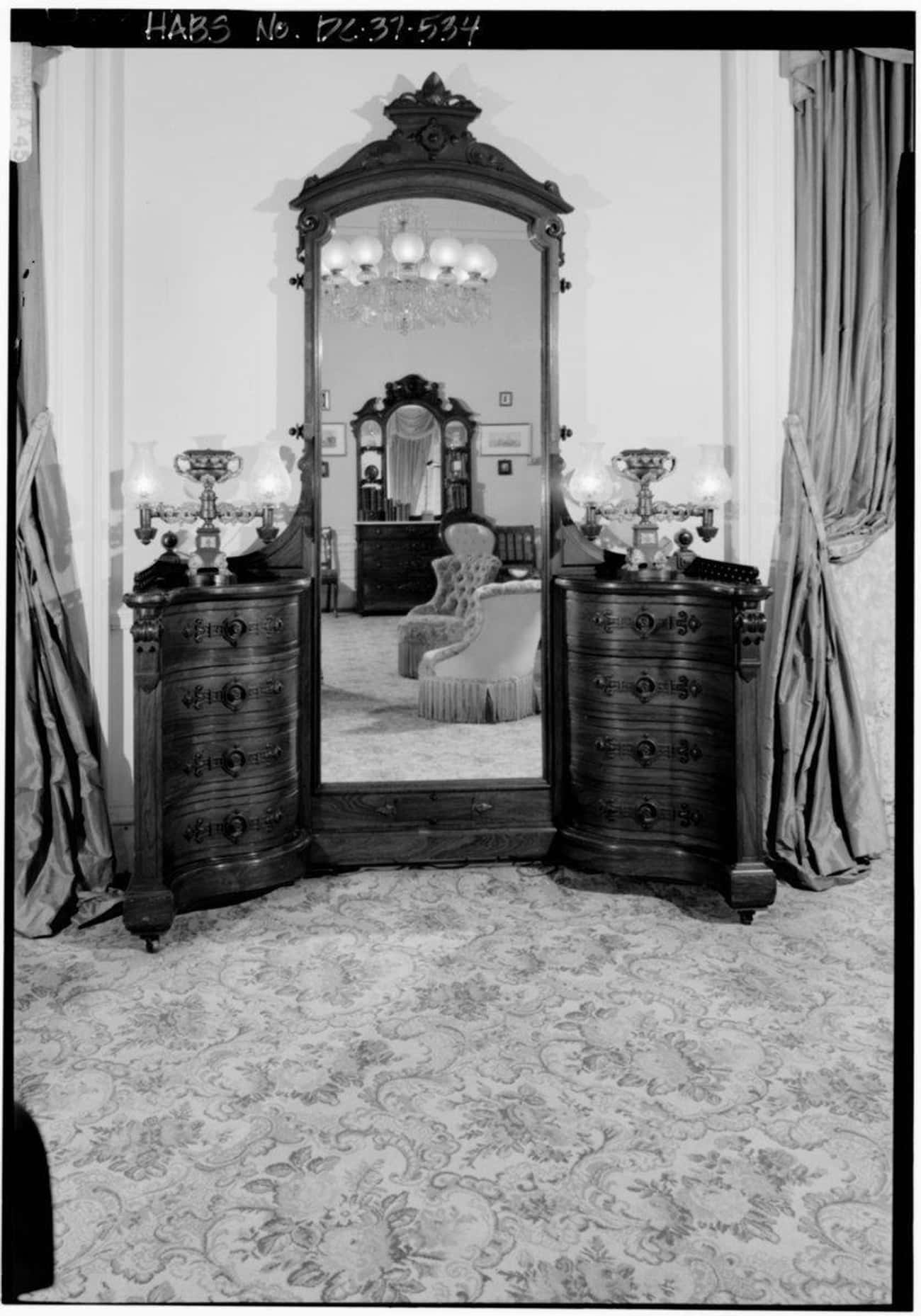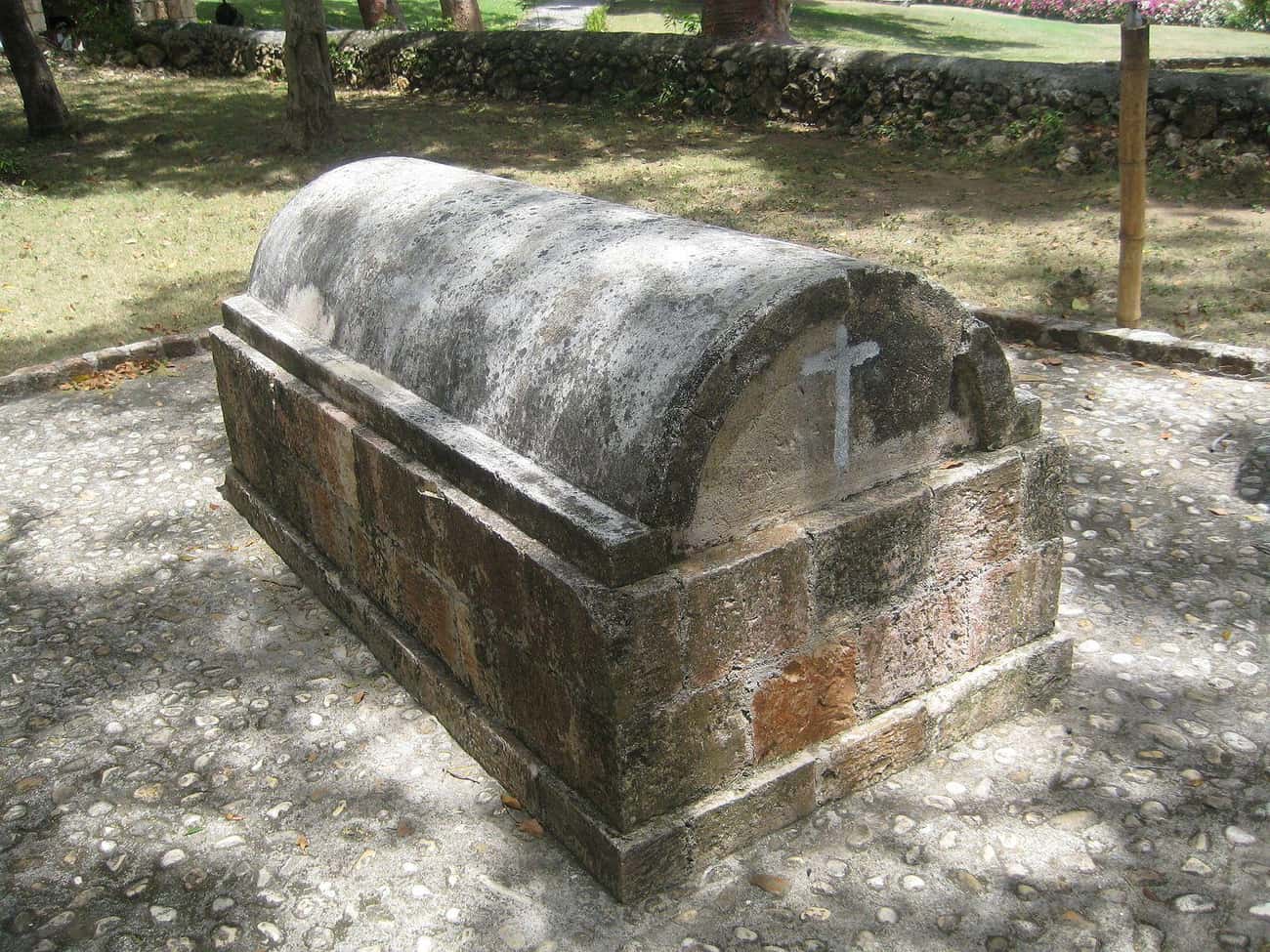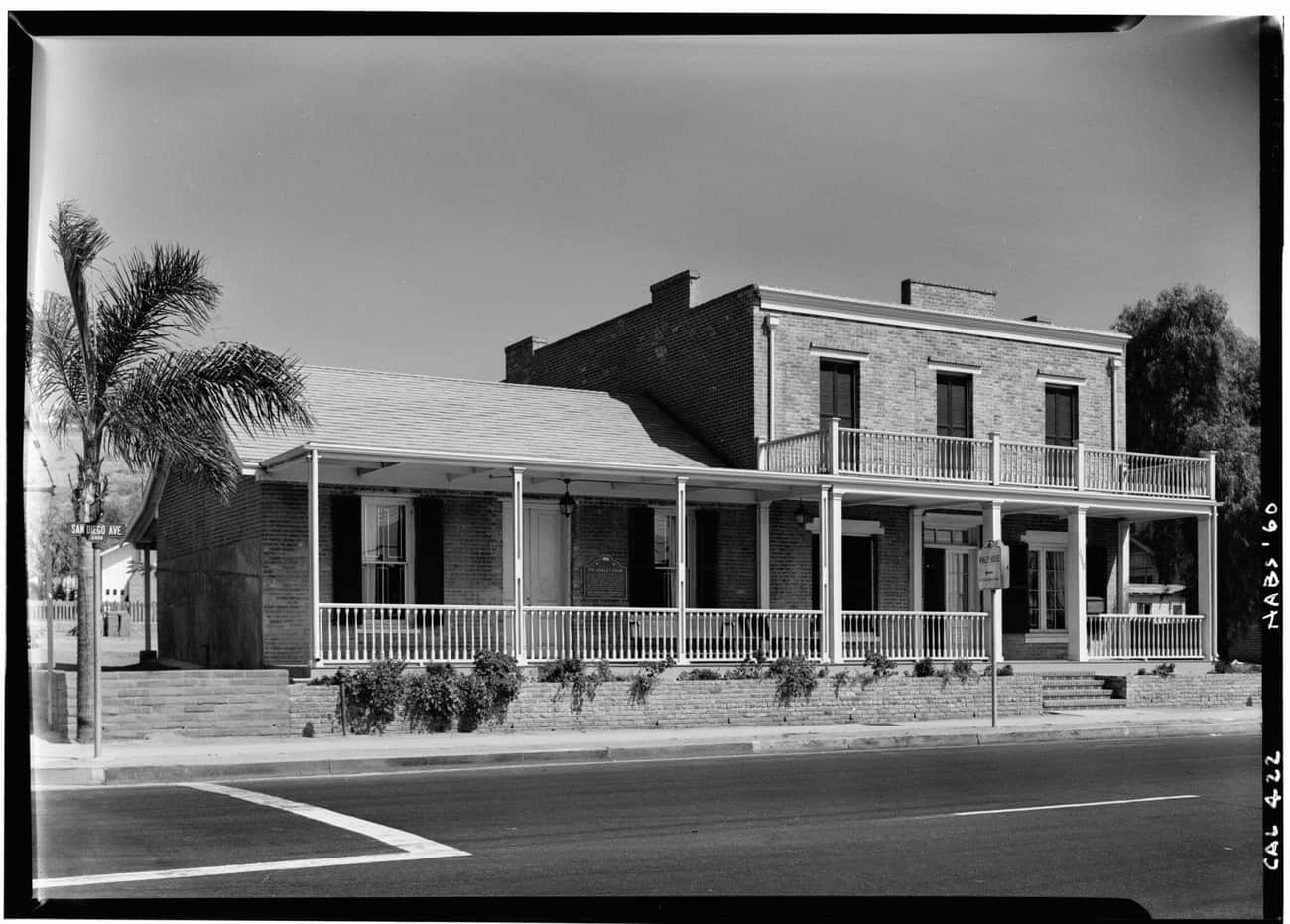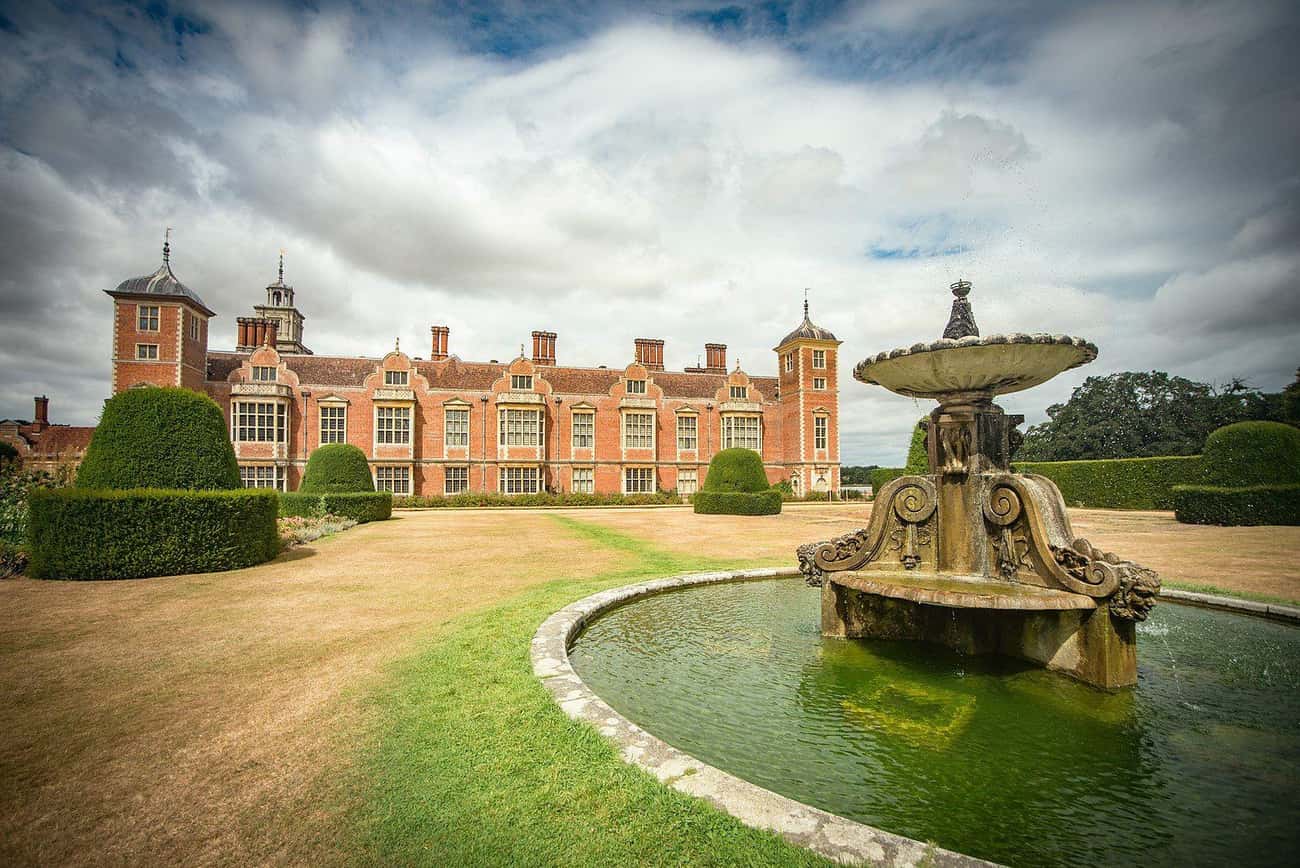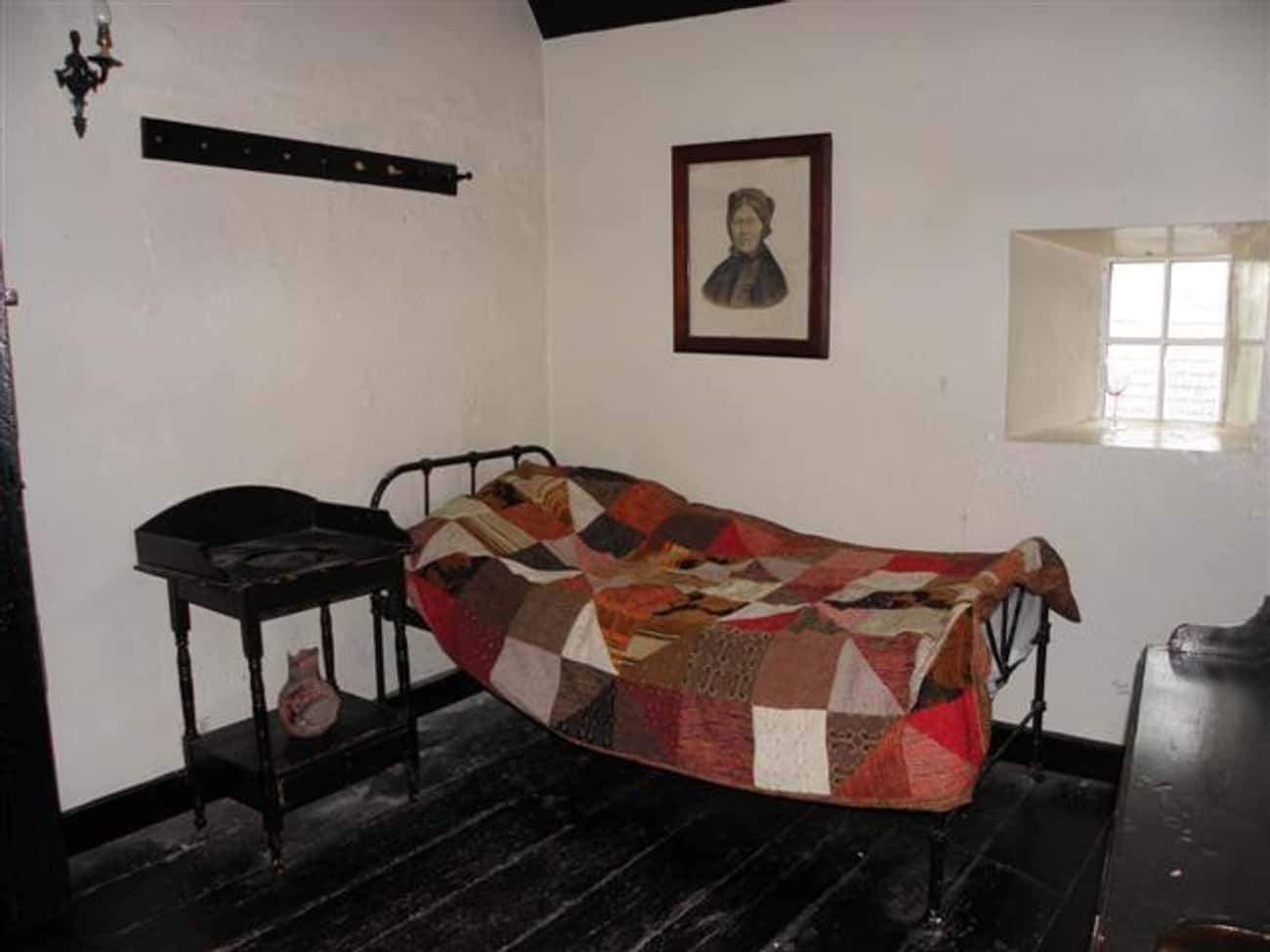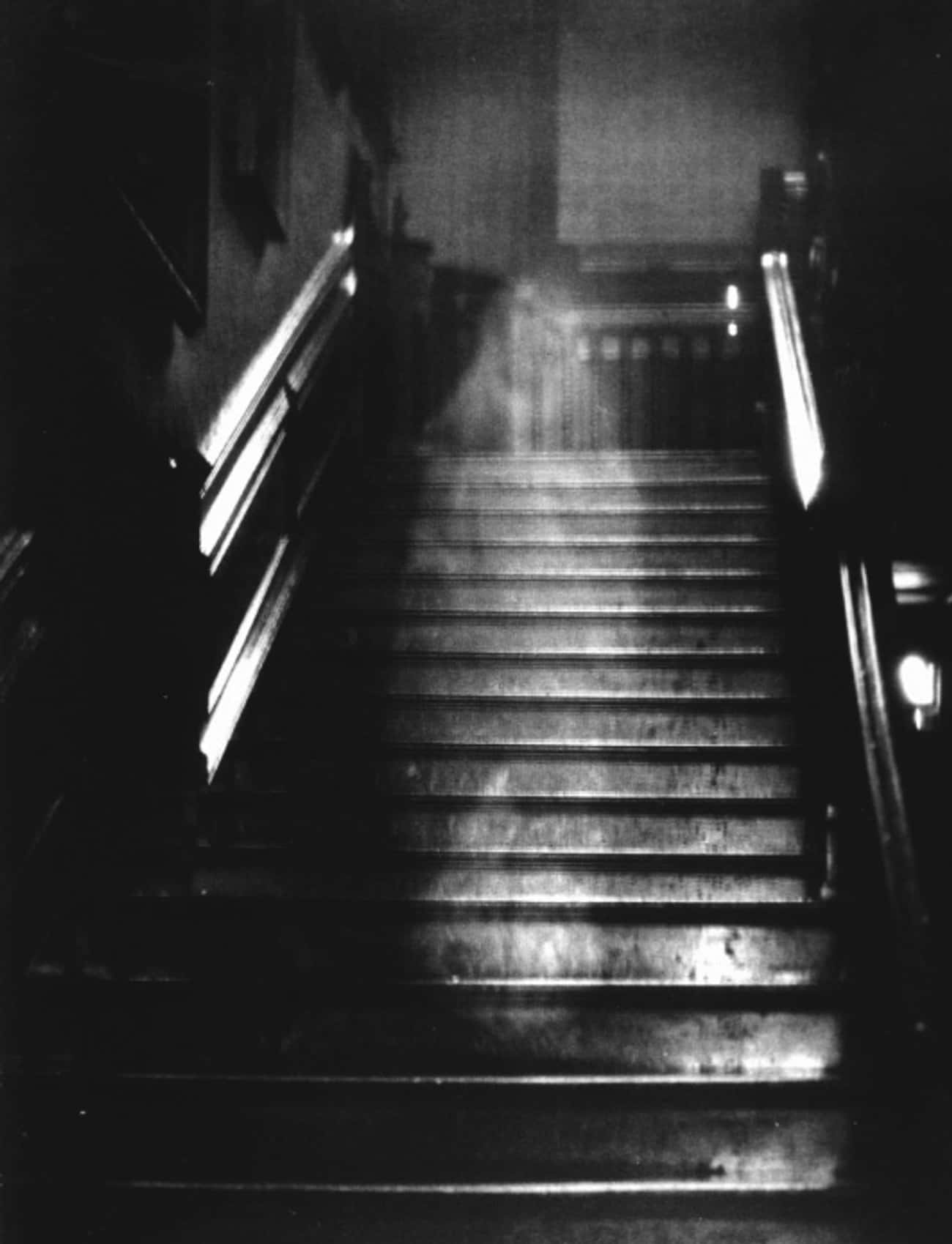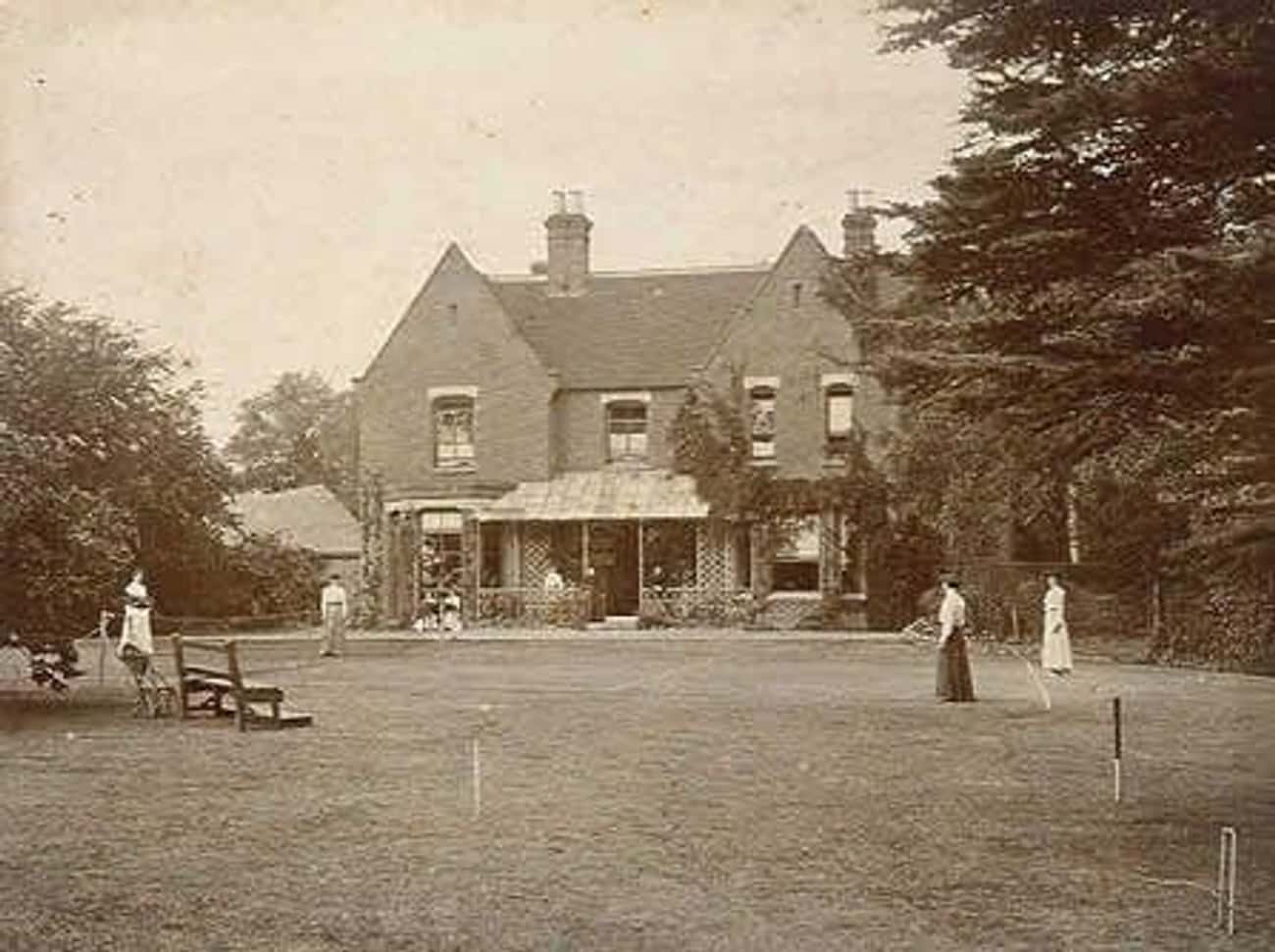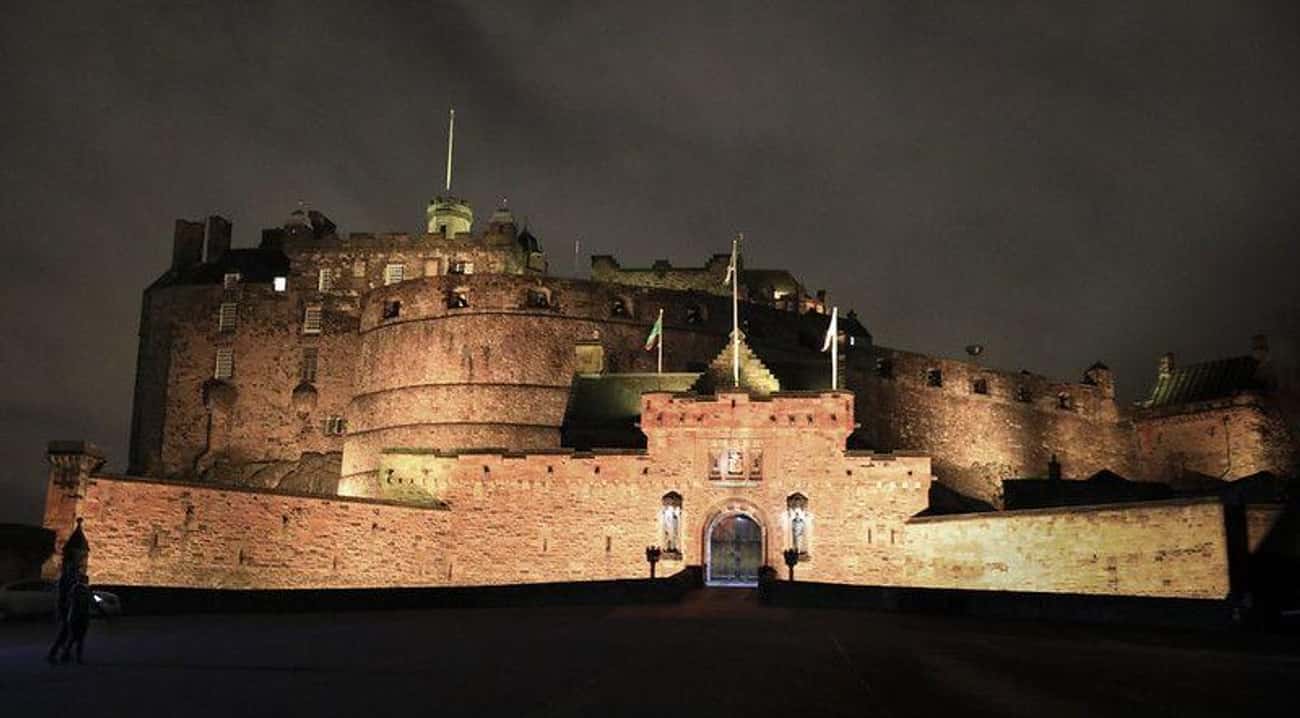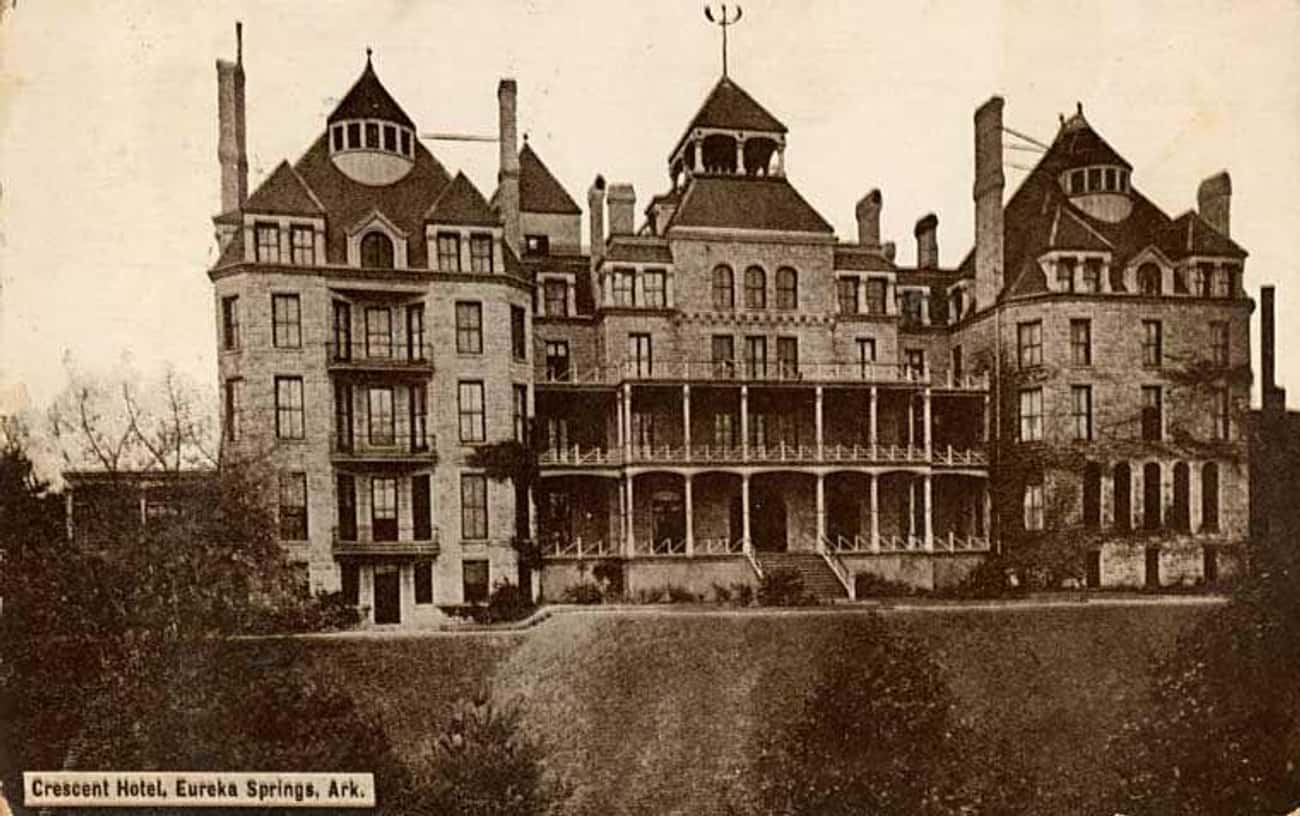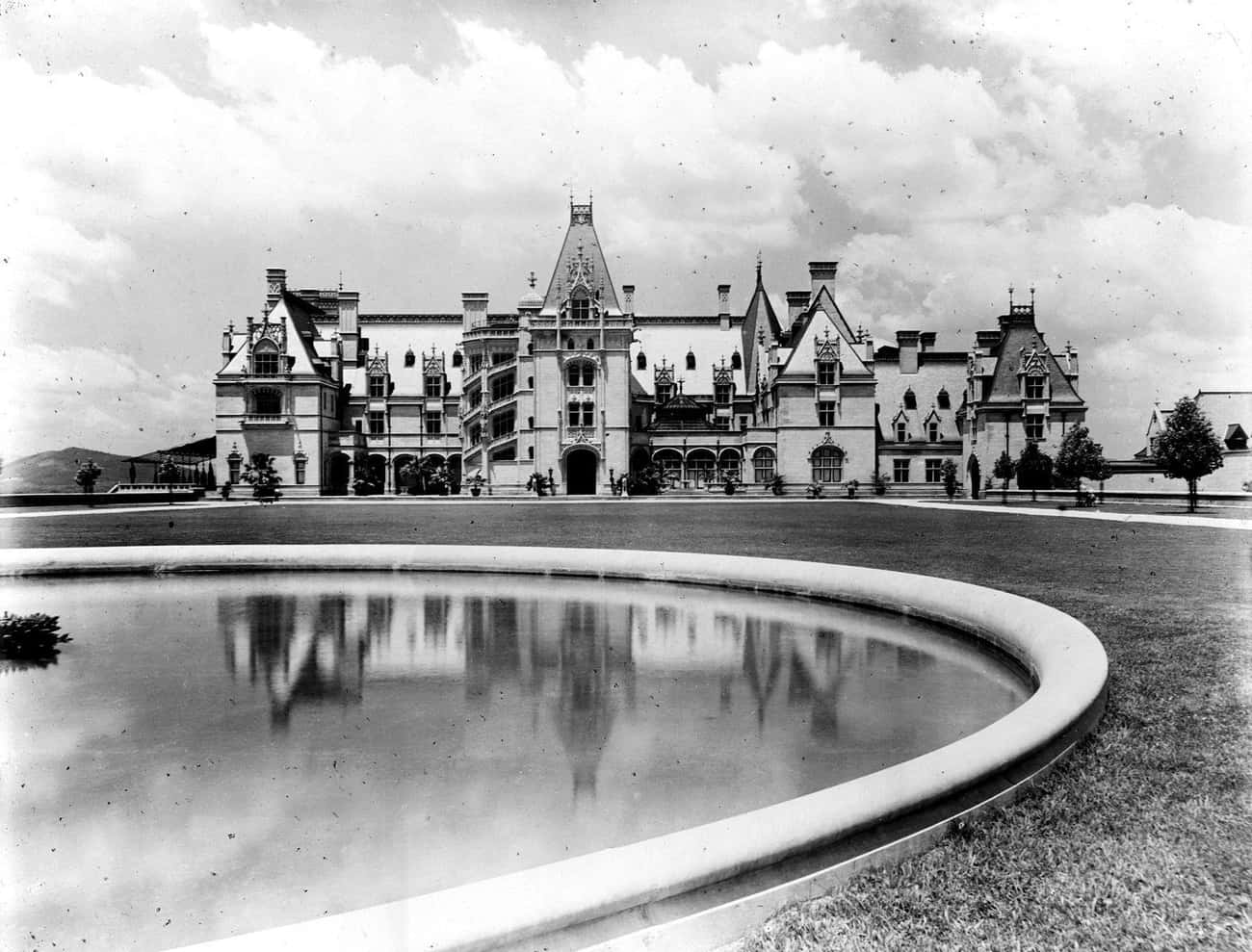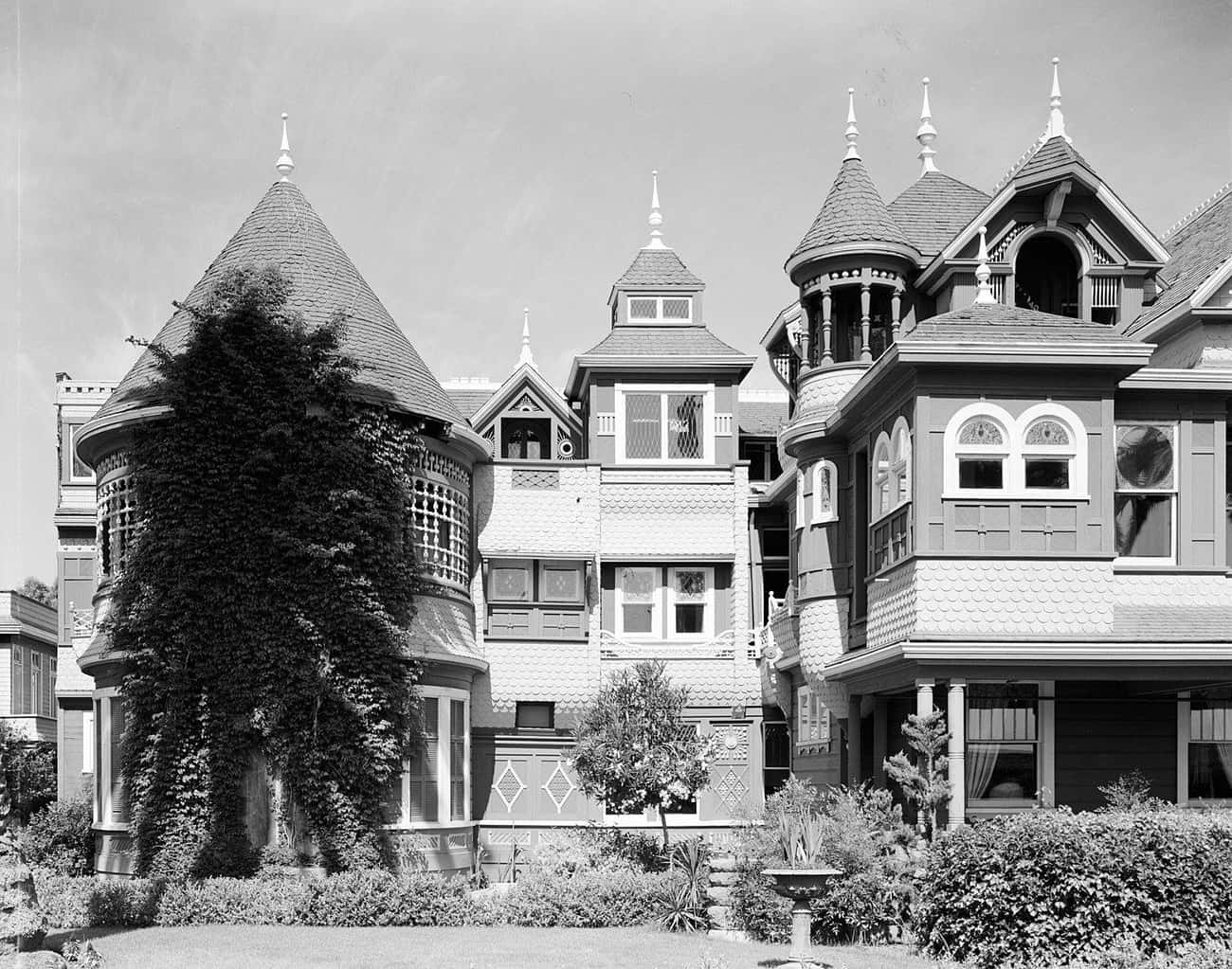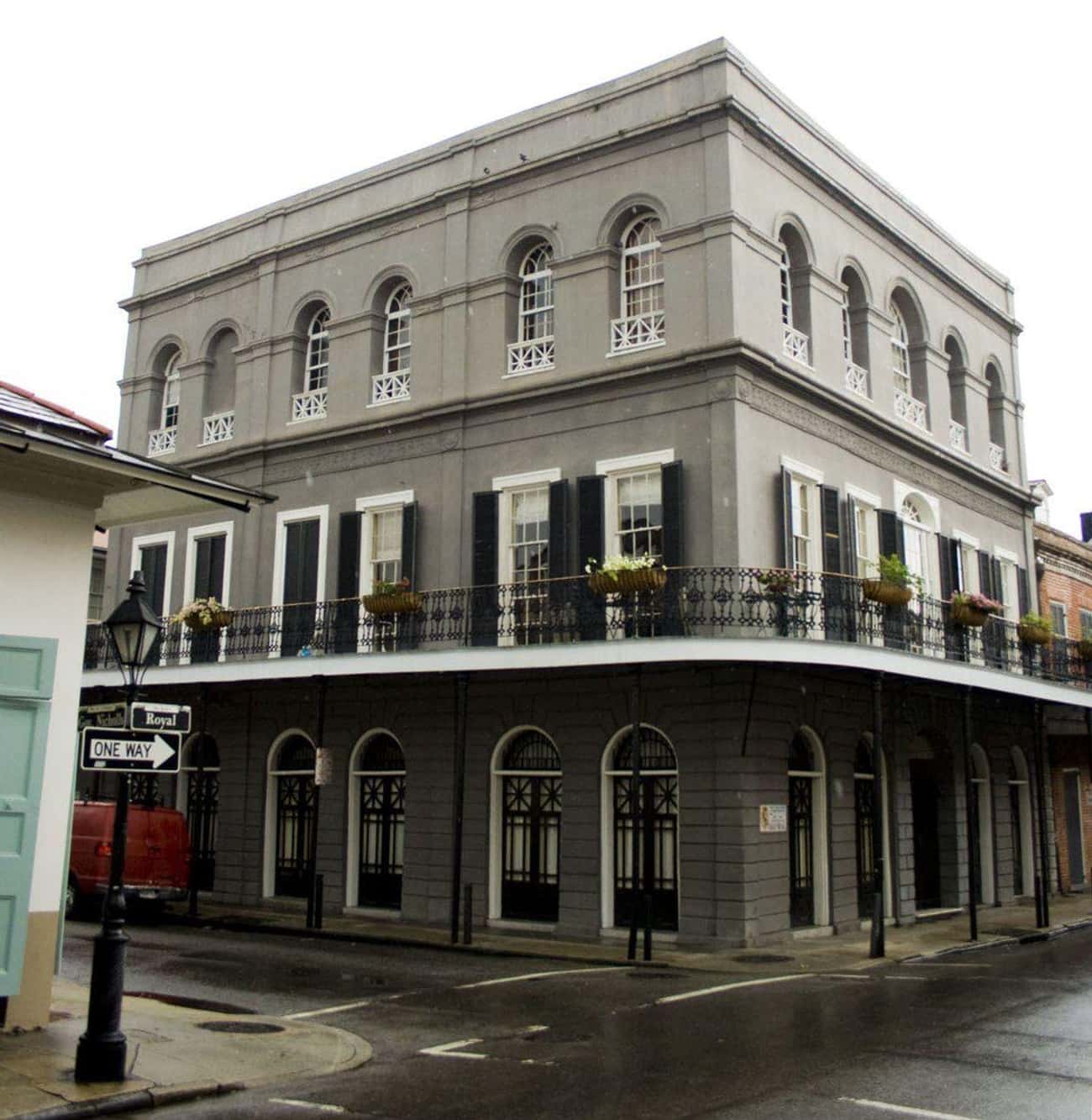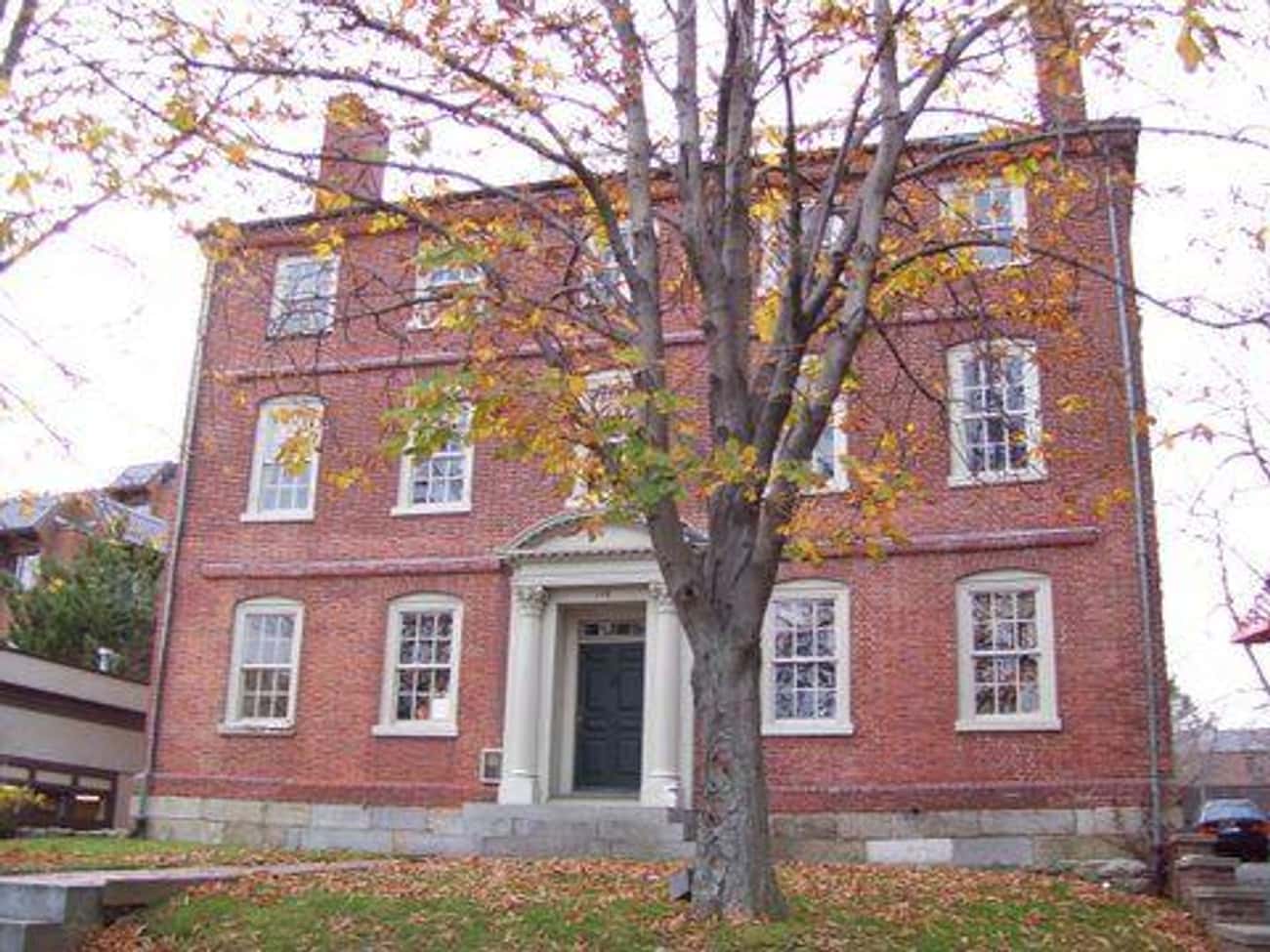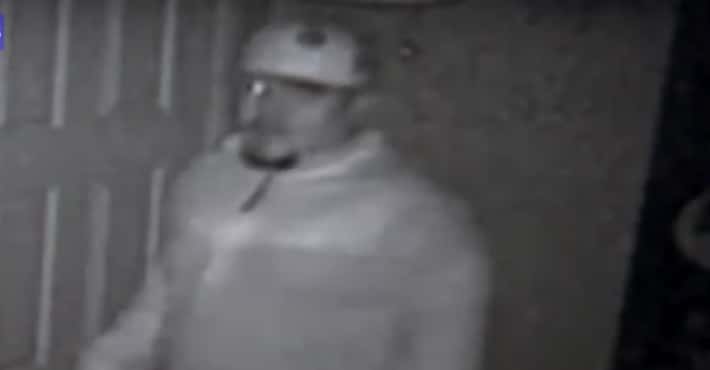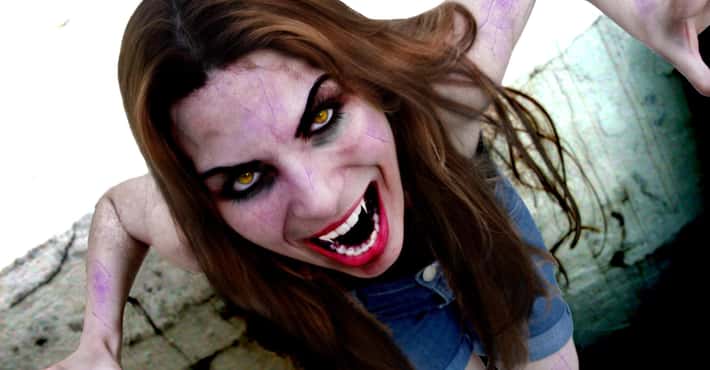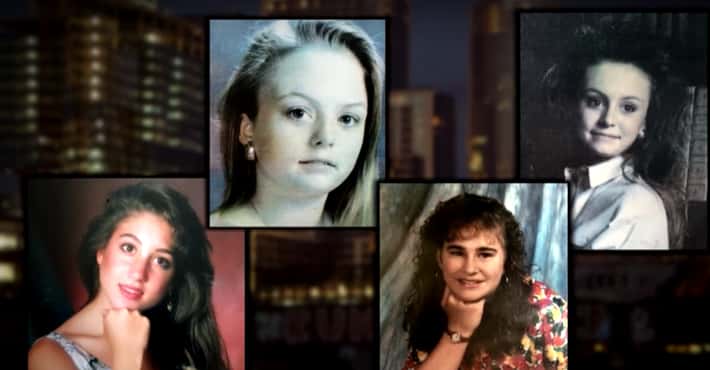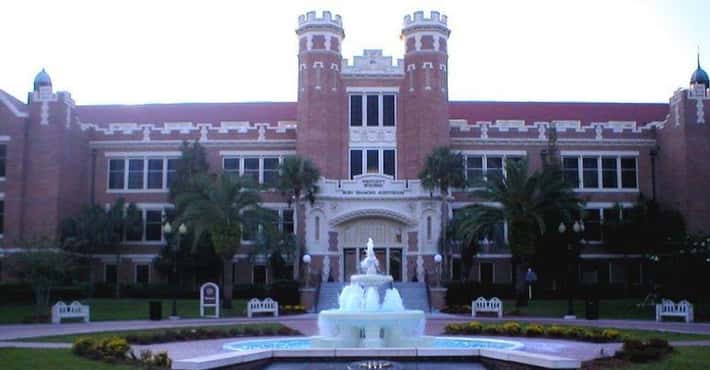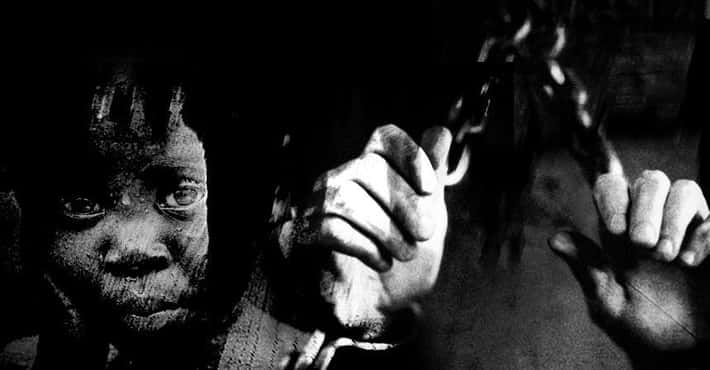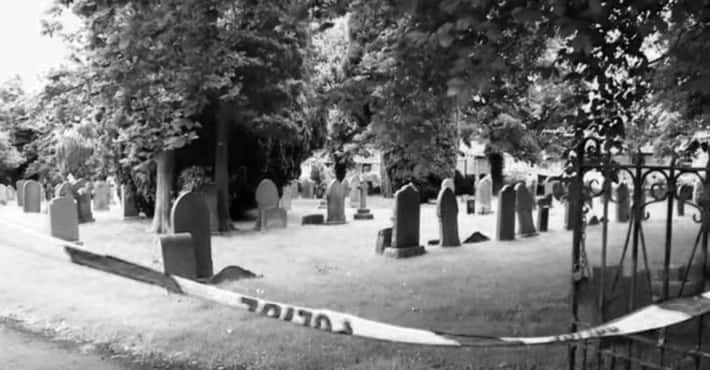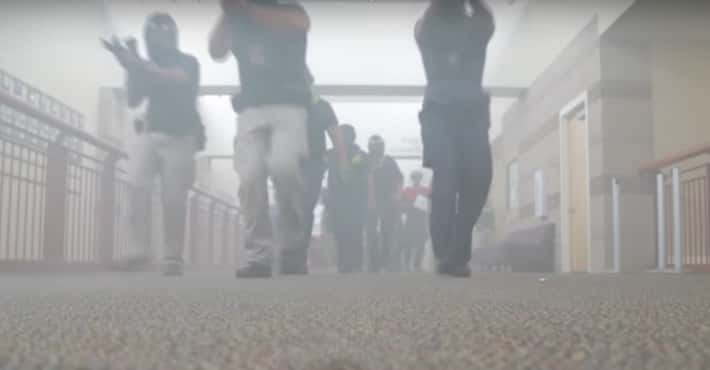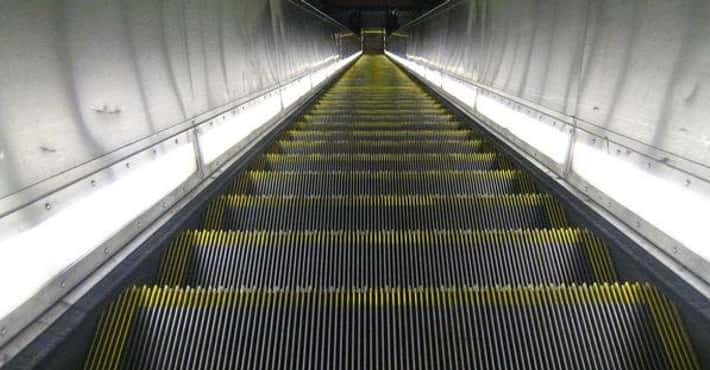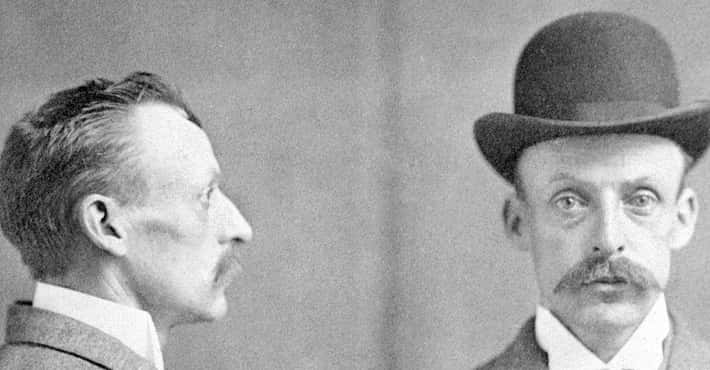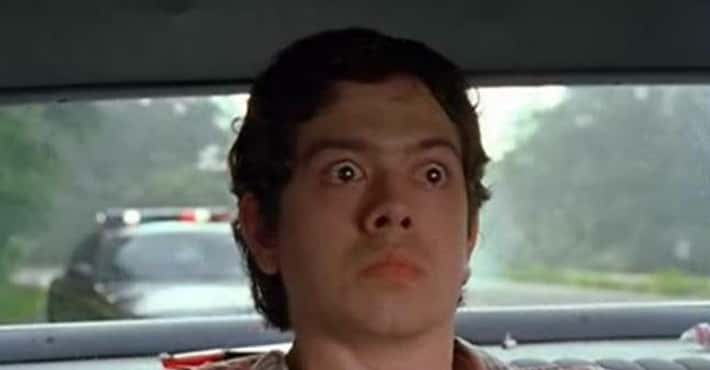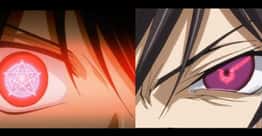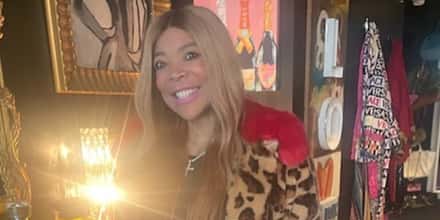Chilling Real-Life Haunted House Stories
Haunted house stories have become a staple of pop culture; you don't need to look far to see the highway billboards challenging you to spend a night in a haunted house, or horror movies about homes built on burial grounds. But are there haunted houses in real life, filled with the ghosts of former occupants and grisly murder victims? Thousands of people have testified to experiencing the supernatural at locations all across the world, and the notion of a place being "haunted" is nearly universal in folklore. These haunted houses are said to be the real deal, complete with ghosts, spirits, and weird things going bump in the night.
Whether these haunted homes are real or fake, haunted houses are also popular tourist attractions in the world. Perhaps the mystery, such as the stairways to nothing at the Winchester House, is the real draw to these locations with visitors coming to decide for themselves if the haunting is real. Do you believe in haunted houses? The next time you're looking for a spooky place to visit, try one of these real haunted houses on for size.
- Photo: Jack E. Boucher / Wikimedia Commons / Public domain
The Location
The White House at 1600 Pennsylvania Avenue has been the home of every American president and his family since the John Adams administration in 1800. Homes in the US don't get much more historic, and few are reported to be more crowded with undead souls.
The Legend
According to legend, the first First Lady to take residence in the mansion liked it so much that her spirit remains there today. Abigail Adams, wife of John Adams, can reportedly be seen hanging laundry in the East Room from time to time.
Adams probably doesn't get much chance to be lonely, as Dolley Madison, wife of James Madison, has also been spotted hanging out in spirit form in the Rose Garden. Madison, who designed the garden during her husband's administration, allegedly returned to stop work on the garden's removal years later.
That's far from all of the haunting in this landmark. In the Rose Room, also known as the Queen's Bedroom, President Andrew Jackson has been seen and heard laughing and swearing. Finally, many visitors and residents of 1600 Pennsylvania Avenue claim to have seen Abraham Lincoln's ghost walking the grounds. First Ladies Eleanor Roosevelt and Grace Coolidge told of spotting Lincoln's ghost in the appropriately-titled Lincoln bedroom. As well, Queen Wilhelmina of the Netherlands claimed that, while spending the night at the White House, she heard Lincoln knocking at her bedroom door.
But Is It True?
Most ghost stories seem to indicate that great traumas or intense emotions are what spark a haunting. Ghosts don't want to hang out just ANYWHERE. They occupy those locations where significant events went down. And it's hard to think of a more significant place where more dramatic decisions have been made than at the White House.
Still, with so many people walking through the White House every day, it seems an odd place for ghosts to be mucking about unseen. And a lot of the stories about White House hauntings are patently absurd, such as when Winston Churchill claimed to have been taking a bath in the White House, only to emerge nude and find himself face-to-face with Lincoln's ghost.
- Photo: Urban Walnut / Wikimedia Commons / CC-BY-SA 3.0
The White Witch Lingers At Rose Hall House
The Location
Rose Hall House is one of the most famous and lavish homes in Jamaica. It was first constructed in the 1770s in Montego Bay, and was most recently refurbished in the 1960s. It is a popular tourist attraction.
The Legend
In 1820, Haitian-born Annie married John Palmer of Montego Bay. John owned Rose Hall at this point, and ran it as a plantation, utilizing slave labor. John died soon after returning to Rose Hall with his Haitian bride. According to local legends, Annie was a psychopath who used voodoo and violence to dominate the men of the plantation. She allegedly manipulated the string of new husbands she acquired over the years, as well as the slaves who worked on the plantation, tolerating them for a time, only to murder them when she lost interest.
It's said that Annie was eventually killed by another powerful magician - an enslaved person whose family member she had tried to curse. Annie was buried in a special grave on the property, and her spirit reportedly remains in Rose Hall to this day. The site, in addition to being a tourist attraction, has been home to seances and other attempts to commune with Annie's spirit. She has come to be known as the "White Witch of Rose Hall."
But Is It True?
Almost certainly not. Aside from a book apparently inspired by the house from the 1920s, there's nothing in the historical record to suggest that Annie Palmer was a voodoo priestess using the house as a home base for a bloodthirsty rampage. There was a real John Palmer, who had a second marriage to a woman named Annie, but he died soon after the wedding and Annie had to leave the mansion.
- Photo: Jack Boucher / Wikimedia Commons / Public domain
Yankee Jim Walks Through Whaley House
The Location
Located in San Diego, California, the Whaley House was built over the site where James Robinson (nicknamed "Yankee Jim") was executed in 1852 after a conviction of grand larceny. A few years after the hanging, Thomas Whaley purchased the land and constructed the home for his family.
The Legend
Yankee Jim was a relatively infamous character in the area. Eventually, he and two other men were arrested for stealing a boat, and he was condemned to die. On the day of the execution, Yankee Jim was said to have swung like a pendulum, going back and forth for an hour before he finally died. Thomas Whaley was there to witness it.
After moving into the home built atop the site of this execution, the Whaleys began hearing strange noises, including the sound of boots stomping around the house. Soon enough, the stories spread that the ghost of Yankee Jim was still wandering the grounds, angry about his death sentence.
Since the Whaleys and their descendants stopped living in the house in the 1950s, other visitors began to notice strange things. Some reported seeing not Yankee Jim but the ghosts of Thomas Whaley, his wife, and children. Even television personality Regis Philbin has claimed to have seen a spirit in the home.
But Is It True?
Beyond first-hand accounts, the most compelling evidence to date of the haunting of Whaley House include a series of photos appearing to show smoke-like apparitions. Convinced?
- Photo: Bs0u10e01 / Wikimedia Commons / CC-BY-SA 4.0
A Headless Anne Boleyn Visits Blickling Hall
The Location
Anne Boleyn was the second wife of King Henry VIII of England. Henry grew displeased with her after she failed to produce a male heir (though she did give birth to a daughter, the future Queen Elizabeth, and two stillborn babies). Henry decided he'd prefer to be with his new mistress, Anne Seymour, so he had Boleyn arrested and locked up in the Tower of London. It was there she was executed for several falsified charges on May 19, 1536.
Blickling estate in Norfolk was where Anne was born, though the Boleyn family home no longer stands on the grounds.
The Legend
The circumstances surrounding Boleyn's death have made her a key figure of fascination in British history. Almost immediately after her execution, stories of her practicing witchcraft and even laughing in the face of death started to spread. Even the Governor of the Tower of London, present at her execution, reportedly said "this lady had much joy and pleasure in death."
Each year on May 19, it's said that a headless Anne Boleyn visits Blickling Hall. Apparently, she's a nostalgic ghost. According to local legend, Anne arrives each year in a carriage, led by a headless horseman. Though it's not exactly known where the head of the horseman lies, Anne carries her detached skull along with her for the ride. Anne's father Sir Thomas Boleyn is also thought to haunt the grounds.
But Is It True?
There are so many stories about Anne Boleyn's ghost appearing in various spots all over England, it's a bit difficult to take any of them too seriously. For example, on Christmas, Anne appears in Kent at Hever Castle, as well as in Essex at Rochford Hall, where her family also spent time. Either Anne is seriously committed to being a ghost, or people are just fascinated by her and thus "see" her in many places.
- Photo: Kenneth Allen / Wikimedia Commons / CC-BY-SA 2.0
Ballygally Castle Has A 'Ghost Room'
The Location
In Northern Ireland overlooking the sea is the picturesque Ballygally Castle. The castle was built in 1625 by James Shaw of Scotland and his wife. The home remained in the Shaw family until the early 19th century, when it was sold by James Shaw's descendant, William Shaw. Today, it is operated as a hotel by Hastings Hotel Group. It holds the distinction of being the only occupied residence from the 17th century in Northern Ireland.
The Legend
Perhaps the most notable ghostly "resident" of the castle is Lady Isabella Shaw, the wife of James Shaw. According to one story, after Lady Shaw gave birth to a boy - the prized male heir for Lord Shaw - her husband locked her away in the castle's tower, separating mother from child. While attempting to escape and steal back her baby, Lady Shaw allegedly fell to her death from the tower. Today, she is believed to wander the hallways and the tower room, occasionally knocking on the doors to random rooms, looking for her child.
Madame Nixon (another former resident), also appears from time to time in the castle, wandering around in a silk dress. There is a room in the castle, located within the turret, that is locally known as "The Ghost Room" and isn't rented out to guests.
Numerous other ghost stories have circulated relating to the castle. One former manager of the hotel claims to have once set up an elaborate dinner party in an area known as the "Dungeon Room" only to return and find the table in complete disarray. Others have said that, due to all the battles that have taken place on or near the grounds, that the ghosts of dead soldiers still appear to visitors on the property. A variety of psychic mediums claim to have detected restless spirits in various points in the castle as well, with one notably claiming that the hotel had more ghosts occupying its rooms than guests.
But Is It True?
The place certainly seems creepy. Furthermore, former manager Olga Henry - herself a skeptic when it comes to hauntings - has some pretty eerie anecdotes about guests who received considerable scares. One in particular concerns a guest staying alone, who felt the presence and even heard the noises of children in his room.
But alas, it seems that the "Ghost Room" may in fact just be a gimmick. Certain bloggers have stayed in the room and not actually observed anything supernatural. One noted that the Ghost Room is surprisingly modern and not even locked away from the rest of the hotel - which seems like a precaution you'd take if there were actually ghosts around.
- Photo: Anonymous / Wikimedia Commons / Public domain
The Location
Raynham Hall was built in Norfolk, England in 1620 at the behest of Sir Roger Townshend. The home was built in a popular Italian style that would become the rage in England many years later, making Raynham Hall notably ahead of its time, and known as one of the finest stately country homes in the area.
The home is also notable for the extensive work done on the house by famous English designer William Kent. Many of Kent's finest pieces - along with a variety of other artwork he hand-picked for Raynham - can still be found in the home to this day.
The Legend
One of Sir Roger's descendants, Charles Townsend, married a woman named Dorothy Walpole in 1712. It is rumored that Lord Townsend found out his wife was having an affair and locked her up in the home in 1725, where she died a year later from illness.
The first sighting of her ghost, which came to be known as the Brown Lady because of her brown dress, took place at Christmas in 1835, where a guest of the house saw her in the halls. He said she was wearing a brown satin dress and seemed to glow from behind her empty eye sockets. His account led to many of the house servants leaving the house immediately, refusing to return.
Numerous notable figures claim to have seen the Brown Lady while staying in Raynham Hall. One of the first and most infamous encounters happened to King George IV when he stayed in one of the home's state rooms. He claims to have woken up to find the deathly pale lady hovering near his bed.
But Is It True?
The Brown Lady is the subject of arguably the most famous ghost photograph of all time, which is fairly unsettling. However, the Brown Lady story does feel a bit like the product of the Victorian fascination with both the occult and sexual moralizing rather than an accurate account of the Townsend marriage. Still, it's hard to argue with the seriousness and integrity of some of these witnesses.
- Photo: Brian Stansberry / Wikimedia Commons / CC-BY 4.0
The Bell Farm Was Plagued By The Bell Witch
The Location
In the early 1800s, farmer John Bell and his family moved from North Carolina to Red River, Tennessee (today called Adams, Tennessee). He eventually came to own over 300 acres of property in the area, and became a respected local leader and elder of the town church.
The Legend
By most accounts, strange things started happening on the Bell family farm around 1817, which have been blamed on an entity known as "The Bell Witch." There are several popular stories. Here are a few of the more intriguing variations:
- John Bell found a strange animal on the property that looked like a half-dog, half-rabbit.
- The Bell children started hearing strange sounds, which at times resembled vermin invading their rooms and gnawing at their beds.
- Faint whispering heard around the house that resembled an old woman softly singing hymns.
- The Bells found a vial of unknown liquid sitting around the house. They tested it out by giving some to the cat, which soon died.Bell grew ill in 1820, by some accounts owing to the stress and terror of believing a witch was haunting him. (In other accounts, John became sick because the Bell Witch had given him some of the strange liquid that killed the cat.) It was said that after John's funeral, the Bell Witch could be heard laughing and singing in the graveyard.
But Is It True?
President Andrew Jackson certainly believed so. He became intrigued by stories of the haunting and in 1819 took a trip there to investigate further. Peculiar things started happening almost immediately upon his arrival at the farm, such as the wagon he was bringing suddenly becoming immobile, with horses refusing to budge. However, it's hard to tell how much of this report is folklore vs. actual history. Most accounts of the Bell Witch come from a 1894 book by journalist Martin Van Buren Ingram called An Authenticated History of the Bell Witch of Tennessee, which was written decades after the events took place.
The story has inspired a number of notable pop culture haunted houses and ghost stories. The horror film An American Haunting is a largely fictionalized retelling of The Bell Witch story, though in this version, John Bell is assaulting his daughter and the Bell Witch is actually a manifestation of her anger and grief.
- Photo: Unknown / Wikimedia Commons / Public domain
The Location
Borley is a small town in Essex, England, near the border with Suffolk on the eastern coast of the country. In 1863, the location became home to a church (also called Borley) which had a large rectory on the grounds built by its first recortor, Reverend Henry Dawson Ellis Bull. According to later paranormal investigators, there was ghostly activity on the property - some which was connected to tragedies that happened centuries earlier.
The Legend
The origin of the ghostly nun story dates back to the site's original purpose, as a monastery - a claim that has not been proven by historical records. Supposedly, a monk from the monastery carried on an affair with a nun from a nearby convent. When the couple were found out, the monk was beheaded and the nun walled up inside the cellar, where she died.
Reverend Bull's own family reported seeing the sorrowful ghost nun haunting the grounds in 1900, and the nun appeared to servants, villagers, and others who visited Borley Rectory. After Reverend Bull died, his own ghost was reportedly sighted.
In the late 1920s, Reverend Guy Eric Smith and his family lived at the Borley Rectory for a year and experienced a great deal of paranormal phenomena. They invited the then-noted paranormal investigator Harry Price to inspect the rectory. Price claimed to discover violent, chaotic poltergeist activity. Reverend Smith and his wife moved out.
The next Reverend to move in was Lionel Foyster, who arrived at the rectory with his beautiful wife, Marianne. The spirit of the rectory appears to have taken a liking for Marianne, singling her out for attention and allegedly even writing messages on the walls for her. (One example: "Marianne please help get.")
Foyster arranged then to have the home exorcized of evil spirits, which is said to have worked for a time. But soon enough, the vengeful spirits returned, attacking Foyster's child, turning wine to ink, and other horrors. The Foyster family moved out of the rectory shortly after.
Harry Price, still intrigued by the strange phenomena happening at the rectory, rented it himself in 1937 and began a series of tests and experiments meant to determine exactly what was happening at Borley Rectory. A year after Price stayed there, the rectory burned down. Price returned to inspect the grounds in 1943 and claims to have found a jawbone that could have belonged to a nun.
But Is It True?
Harry Price's team logged a large amount of research and observations relating to their time spent at Borley Rectory, and a number of photographs of spirits came out of the period.
As well, a number of the original individuals involved in the Borley legends spoke publicly about their experiences, including Marianne, who suspected that some of the actions credited to the Borley ghost were probably hoaxes or fakes, but still maintained that the house was likely haunted.
It's also extremely unlikely that the story about the ghost nun is accurate, and by the 1930s, this version of events had already been widely discredited. (It's believed to have come from a popular novel of the time by Rider Haggard.) This obviously hurts the believability of all the later stories, as the un-dead nun trapped forever in the rectory walls seemed to have been the original source of all the other legends.
Finally, though a series of exorcisms were undertaken, and Price even found the jawbone amidst the rubble and gave it a proper Christian burial, sightings of ghosts around where the rectory stood continue to this day. What more could this ghost possibly want after centuries of wandering around aimlessly?
- Photo: Scottish Government / Flickr / CC-BY 2.0
The Location
The Edinburgh Castle in Scotland that sits atop the famous volcanic "Castle Rock" was constructed by King David I in the 12th century, and it remained the seat of the Scottish king until the English overtook it in 1650. After that, it endured many sieges and was used as a prison in the 18th and early 19th centuries. Today, the site is one of Scotland's most popular tourist attractions and one of the most iconic images of the country.
The Legend
Because of the location's key significance in Scottish history, there are too many ghost stories circulating about the place to even compress into anything less than an essay. So in brief...
- A ghostly drummer and piper can be heard throughout the castle whenever it is about to be attacked. (Obviously, this hasn't happened in a while...) Prior to the 1650 siege of the castle by Cromwell's forces, the drummer was spotted and identified as the ghost of a headless boy.
- The dungeons, where numerous prisoners were held and tortured, are thought to be populated by some restless spirits and visitors can now tour the dungeons to find out for themselves.But Is It True?
Well, probably not.
BUT STILL, there's more evidence pointing towards Edinburgh Castle being haunted than almost any other place on Earth. In 2001, a study was conducted on the castle, testing the reactions of people who had never before heard the legends of its haunting to exploring the castle. 51% of the subjects reported experiencing something supernatural in areas that were previously identified as "haunted." In other areas, only 35% of subjects reported supernatural goings-on. Among the reports were strange shadows and the sensation of something tugging at your clothes.
- Photo: Unknown / Wikimedia Commons / Public domain
Tormented Patients Linger At The Crescent Hotel
The Location
The Gothic style Crescent Hotel of Eureka Springs, Arkansas, is sometimes called the "Grand Old Lady of the Ozarks," and is often listed as the most haunted place in all of the Ozark Mountains (a location known for its colorful folklore). The hotel and spa was designed by famed Missouri architect Isaac Taylor and built in 1886. Eureka Springs had recently become infamous as the home of "healing spring waters," which were believed to have curative properties for all variety of ailments. Tourism to the area also got a boost when a stop on the newly-built Frisco Railroad was built close by.
Interest in the resort waned by the turn of the century, after it became clear that the springs - though delightful for holiday goers - didn't actually help cure anything. It has been run in the intervening years alternatively as a hotel and health clinic, and is currently open as a spa and resort.
The Legend
Rumors and stories about hauntings at the Crescent started as soon as construction began. It's said that one of the workers - in most accounts, a stonemason named Michael - plunged from the roof to his death, landing in the spot currently occupied by Room 218. Naturally, strange noises have been reported in this room over the years by guests.
Most of the horror stories surrounding the Crescent concern the years it was operated by a charlatan named Norman Baker. Baker - who was not a licensed physician - intended to use the Crescent as a clinic for people with cancer.
Local legends sprung up around the clinic, however, about Baker's cruel and gruesome treatments. Baker was arrested in connection with the scheme in 1940 and did 4 years in prison, abandoning the hospital thereafter. But it's said that the ghosts of his tormented patients still linger there, most famously a nurse named Theodora. There is also a ghostly cat named Morris.
But Is It True?
The Crescent is a popular location for TV shows and documentaries about ghost hunters, and has appeared on Sci-Fi Channel's Ghost Hunters, NBC's Today Show, A&E's Haunted Road Trips, and elsewhere. It's important to bear in mind, though, that much of the Crescent's business depends on the fascination with its haunting, so it's in everyone's financial best interests to make sure there are an appropriate number of "sightings."
As well, Baker was never charged with torturing or brutalizing patients, merely with defrauding them.
- Photo: John H. Tarbell / Wikimedia Commons / Public domain
The Indoor Swimming Pool Feels Strange At The Biltmore Estate
The Location
The Biltmore Estate in Asheville, North Carolina, is the largest private residence in the United States. The Gothic style mansion house covers four acres within its walls, with 175,000 square feet and 250 rooms under one roof, and sits on a plot of over 8,000 acres of land. Reportedly, over one million people visit the attraction annually. The home was built by George Washington Vanderbilt between 1889 and 1895 and remains tied to descendants of the Vanderbilt family. The home was built in a Chateau style inspired by French Renaissance architecture.
The Legend
Following George Vanderbilt's death in 1914, his wife Edith claimed to still see him and speak with him around the house. (Servants attested to seeing Edith having full conversations with her late husband, though none of them apparently saw the ghost.) Others have claimed to see George's ghost relaxing in his favorite sitting room on the second floor, or hearing the ghosts of George and Edith conversing late at night in the halls. Other guests have reported seeing an orange cat (sometimes appearing headless), or hearing strange things and feel terror near the indoor swimming pool.
But Is It True?
Due to the popularity of the Biltmore among tourists, there are dozens of eyewitness accounts and anecdotes about strange goings-on at the estate. It seems, if nothing else, that there must genuinely be some way to explain the bevy of strange sounds people are hearing, particularly by the pool area.
Sites like Yahoo Answers even have numerous people testifying to experiences with ghosts at the Biltmore. Plus, unlike most haunted locations that now serve as tourist destinations, the Biltmore downplays the spirit-world connection on their website and in promotional materials. Counterintuitively, this lends an air of credence to the rumors...
- Photo: Historic American Buildings Survey (HABS), Historic American Engineering Record (HAER) or Historic American Landscapes Survey (HALS) / Wikimedia Commons / Public domain
The Winchester Mystery House May Have Been Built To Confuse Spirits
The Location
William Wirt Winchester, heir to the Winchester rifle fortune, was happily married to wife Sarah, and in 1866 they had a daughter who lived for less than a year because of ill health. William's death followed in 1881, plunging Sarah Winchester into a deep depression, and also leaving her with an estimated $20 million inheritance.
In 1886, Sarah Winchester used some of the money to move from her home in New Haven, Connecticut, to San Jose, California, and begin construction on a lavish mansion. The house was constantly under construction, 24 hours a day, 7 days a week, for the next 20 years, until the 1906 San Francisco earthquake. Sarah died in 1922.
She paid workers to make all sorts of improvements in the home at all hours, day and night, often demolishing one improvement to add another. One particularly befuddling addition was a staircase to nowhere, having been built on the upper floor of the home and ending at the ceiling. It's estimated Winchester, over the course of her life, spent approximately $5 million on the home or $71 million in contemporary dollars.
The Legend
The spooky story of Winchester House begins before the property was even built. It's said that Sarah had met with a psychic medium in Boston who told her she was being haunted by the spirits of all those people killed with her late husband's rifles, and she must move west and build a mansion to house all of these undead souls. Apparently, Sarah believed that, should she ever stop working on the home, the spirits would overtake and kill her. (Other variations of the story say that Sarah believed her husband and daughter had already been killed by these spirits, and building the mysterious home was hopefully a way to make the ghosts confused and keep them from finding and killing her, too.)
This would explain some of the peculiarities of the home's design, and its maze-like layout. The presence of only two mirrors may also play into Sarah's alleged paranoia, as she believed spirits were afraid of their own reflections. Sarah was also fixated on the number 13, so much of the house's design revolves around that figure - including the ringing of a large bell 13 times every Friday the 13th.
In subsequent years, Sarah herself has become part of the ghostly mythology of the house, with later visitors claiming they have seen her spirit lingering around the property.
But Is It True?
It seems definitely true that Sarah Winchester was an odd lady who had some kind of fixation with the occult and the supernatural. There's very little in the way of rational explanations for the "mystery house," particularly the stairways leading to nowhere and the obsessive "number 13" details. It also is certain that the house holds a certain fascination for visitors, and is definitively creepy.
But was Sarah Winchester really being haunted? Tourists have reported many of the now-recognizable calling cards of the haunted house - strange footsteps and creaking floorboards, odd reflections in the home's many mirrors, faint whispers heard around corners or behind closed doors. And the usual gathering of psychics and paranormal investigators have toured the home, many of them convinced that there is some kind of spirit energy in the place. But nothing concrete indicating a ghostly presence has ever been identified in the house, and its ongoing popularity as a tourist destination is probably enough reason for the rumor mill to continue even in the absence of evidence.
Adding more mystery to the already mysterious house, in was reported in October 2016 that a 161st room had been discovered and opened to the public. An attic space containing a pump organ, couch, sewing machine, paintings and other items, the room was apparently boarded up by Sarah Winchester after the 1906 earthquake. She had become trapped in the room, and believed "evil spirtis" had caused the widespread destruction.
Mary Remains At The Chandler Estate
The Location
Once said to have been visited by blonde bombshell Marilyn Monroe and playwright Arthur Miller, the Chandler Estate is secluded deep in the spooky woods of Mount Sinai, New York. Originally built as a resort, it was later turned into an apartment complex. The building mysteriously burned to the ground.
The Legend
For many years, the Chandler Estate became synonymous locally with the practice of Satan worship. Stories circulated about tourists being lured into the area to then either witness satanic cult rituals or be directly threatened by Satanists. (One story tells of a resident who returned home to find a bunch of creepy, devil-obsessed children in his apartment.) One spot, near where the fire escape was once located, seems to be a particular conduit for other-worldly visitors. People who have stood in the spot report experiencing dizziness, blurred vision and difficulty breathing.
But the most famous spirit said to occupy the estate is "Mary," a mental patient who had once been a resident of the boarding house there until her mysterious disappearance. Mrs. Chandler, who was then running the boarding house, claimed that even after the disappearance, she would sometimes see the lights go on and off in Mary's room, and people thought they saw her wandering the property.
But Is It True?
Almost assuredly not. The legend of "Mary" may go back to the name "Mary" that was genuinely written on one of the doors in the old estate. But it's unclear if this ever linked up to a real person named Mary who lived in the apartment, or if she was indeed a mental patient who vanished under mysterious circumstances. Blurry, indistinct photos are the only real "evidence" of supernatural happenings at the Chandler.
- Photo: Dropd / Wikimedia Commons / CC-BY-SA 3.0
The LaLaurie Mansion Bears A Terrible Curse
The Location
In 1832, the wealthy and glamorous Creole socialite Marie Delphine LaLaurie built an opulent mansion in the French Quarter of New Orleans, where she lived with her third husband, Dr. Louis LaLaurie. Even by the abhorrent standards of the time, Madame LaLaurie was considered to be exceptionally cruel to her slaves, so much so that nine of her slaves were confiscated by law enforcement (though LaLaurie set up her relatives to secretly buy them back and return them to her).
Rumors continued to swirl about LaLaurie, until a kitchen fire in 1834 revealed the terrible truth. Firefighters found the LaLaurie's 71-year-old cook chained to the stove. The cook confessed she had set the fire on purpose in desperation to avoid being sent to the attic, where she knew terrible tortures took place.
When firefighters bust into the attic, they witnessed unimaginable atrocities. Slaves had been chained and subject to terrible, disgusting tortures and mutilations.
Madame LaLaurie escaped punishment and fled the house, never to be seen again.
The Legend
Following the Civil War, the now-abandoned LaLaurie house was used for several purposes, including a school, a furniture store, and apartments, but none lasted very long. The mansion was eventually converted into an apartment building, where occupants reported a large amount of supernatural activity, such as the ghosts of former slaves.
But Is It True?
None of the supernatural stories surrounding the apparently cursed mansion have been conclusively proven, of course, but it is a popular spot for New Orleans ghost tours and is featured in horror film and TV.
- Photo: Bogdan Oporowski / Wikimedia Commons / CC-BY-SA 3.0
A Ghost Named Chloe Was Supposedly Photographed At The Myrtles Plantation
The Location
This large home began in 1796 in Louisiana, by General David Bradford, who had a land grant, but owners in the early to mid 19th century remodeled and built up the mansion. The large plantation house boasts 22 rooms and a veranda that ran the entire length of the facade.
The Legend
There are rumored to be at least a dozen ghosts haunting the property, the most famous of which is that of Chloe, a slave who was sleeping with the plantation owner. Chloe began to fear he was growing tired of her and would soon send her to much more difficult work in the fields, so she intentionally baked a poisoned cake for his young daughters. Her plan was to make them only a little ill, then miraculously cure them and nurse them back to health, earning herself a permanent place with the house staff. Tragically, she miscalculated the dose, and accidentally killed the daughters, as well as the owner's wife. In punishment, Chloe was hanged.
In addition, the home was thought to have been built on a Native American burial ground.
These ghosts have supposedly showed up in at least two different photographs. A ghostly girl appeared in a photograph taken in 1992 by National Geographic Explorer. Later, teacher and her students posed for a photo while on a field trip to the Myrtles Plantation, and a little girl's ghost appears to be visible in the window behind them.
But Is It True?
Much of the history surrounding house has been found to be little more than tall tales. Though it is claimed at least 10 people have been murdered in the house, in reality, there is only one documented case. In January 1871, an attorney named William Winter was shot in front of the house by a stranger, without explanation and without warning, and died.
In addition, a number of people, including children, died in the home of yellow fever, as was tragically common at the time.
While filming an episode of the TV show Unsolved Mysteries there in 2002, the crew reported unexplained technical difficulties with their equipment.
- Photo: Swampyank / Wikimedia Commons / CC-BY-SA 3.0
The Joshua Ward House Is Connected To The Salem Witch Trials
The Location
The present-day Joshua Ward House in Salem, Massachusetts, is an austere three-story brick house built in 1784. However, the house was built on the site of the former home of Sheriff George Corwin, who signed the warrants for arrests and executions during the Salem witch trials.
The Legend
Apparently, as he died, the accused witch Giles Corey cursed Corwin and every sheriff who would come after him in Essex County. Corwin died at the young age of 30 and his wife had him buried in the basement of his own home so as to prevent anyone from disinterring him or desecrating his grave.
In 1981, Richard Carlson bought the building to use for his real estate office. According to one paranormal blogger:
The burglar alarm would constantly go off at night, getting Richard or another employee out of bed to attend to it. Doors would shut on their own and lights would go on and off, activated by unseen hands.In one particularly interesting incident, an employee had two candlesticks on the fireplace mantle in her office. As she unlocked her office one morning, she noticed that the candlesticks were turned upside down on the mantle, and the candles themselves were actually on the floor, one bent in an 'S' shape, and the other into a 'boomerang' shape, as if they had been melted and manipulated.
Most frightening, an employee was taking photos of everyone who worked in the office to use as holiday decorations. But when he took a photo of one young woman, a terrifying image of a witch turned up instead.
But Is It True?
There are other explanations offered for the so-called "witch photo," but the connection of the house with the Salem witch trials is fact, and no doubt leads to the home's spooky vibe.


